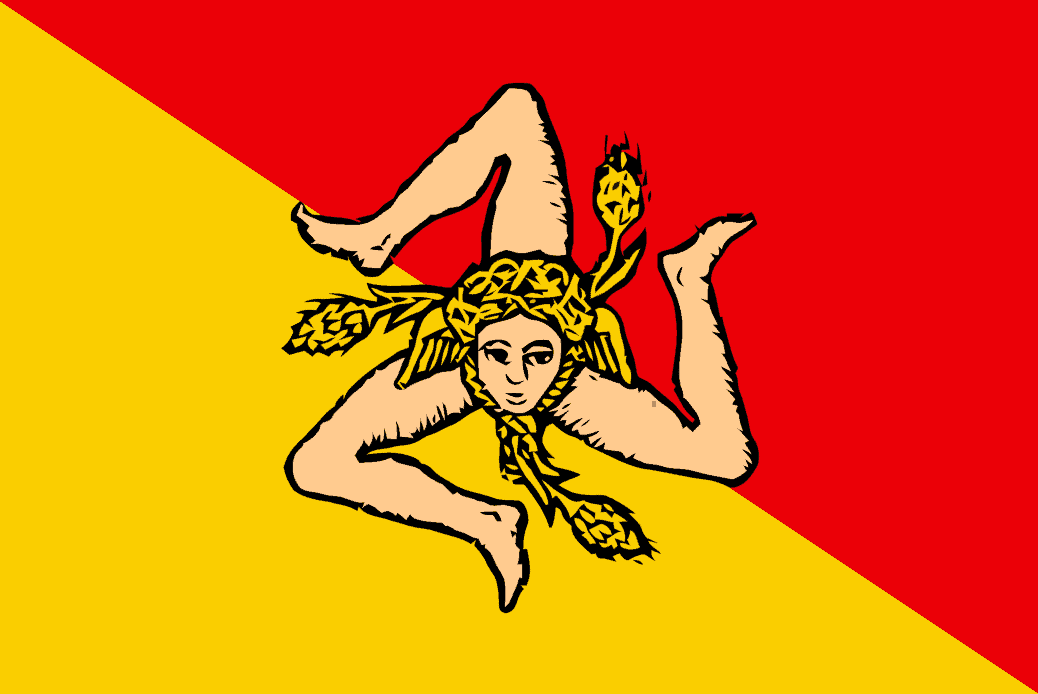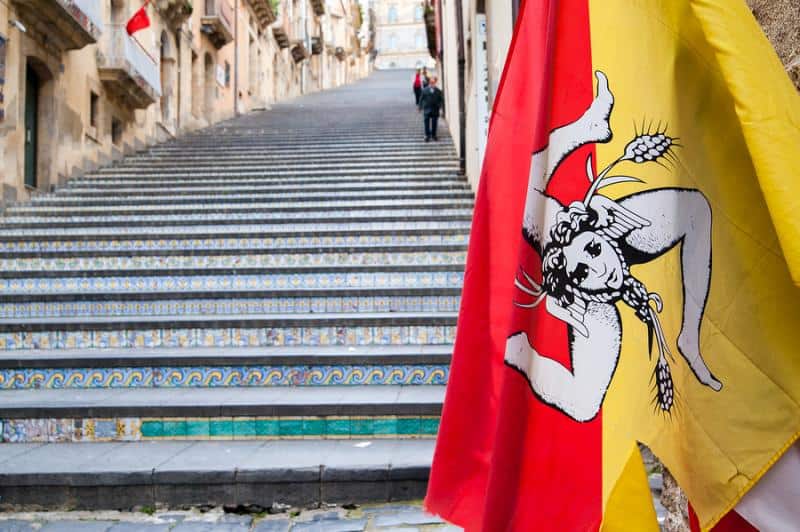Greeks are everywhere! Anyone who has travelled to Sicily has most likely seen, on flags, ceramics and souvenirs, a strange-looking representation of a female head with three legs attached to it, flexed to form a triangle.
That’s the symbol of Sicily, adopted by the island many centuries ago, when it was dominated by the Greeks, and now used in the official Sicilian flag.
 The symbol is known as Trinacria, a Greek word that means ‘three pointed;’ it recalls the shape of the island, which resembles a triangle.
The symbol is known as Trinacria, a Greek word that means ‘three pointed;’ it recalls the shape of the island, which resembles a triangle.
Trinacria was the earliest known name of the island of Sicily.
The head refers to Greek mythology, it is said to be Medusa, a gorgon (monstrous creature) with a head of snakes, a beautiful woman seducing men who, upon looking at her, were turned into stone.
In the past, it was customary to place a Trinacria behind the home’s door as a symbol of protection for the house - the Medusa would have turned to stone whoever wanted to hurt the family living inside.
The hair on the head of the gorgon is a snake intertwined with stalks of wheat, to which three legs bent at the knee are attached. The arrangement of the three legs refers to Eastern religious symbolism. The three legs represent the three capes of the island of Sicily: Peloro (north-east), Passero (south), and Lilibeo (west), which form the three points of a triangle.
The three stalks of wheat were added in Roman times, when Sicily was a major wheat provider of the Roman empire; overall, they symbolise the fertility and prosperity of the region.
The oldest known representation of the Trinacria is a terracotta vase housed in the Archeological Museum of Agrigento.
Coat of arms of the Isle of Man. And the coat of arms of the Alcmaeonidae archons. The Greeks are everywhere.😀 pic.twitter.com/dxNbrZhPYH
— Andrew Sydorenko (@saavus_) February 10, 2022
Read also Costas Cacoyannis, Cyprus’ Most Prolific Composer

